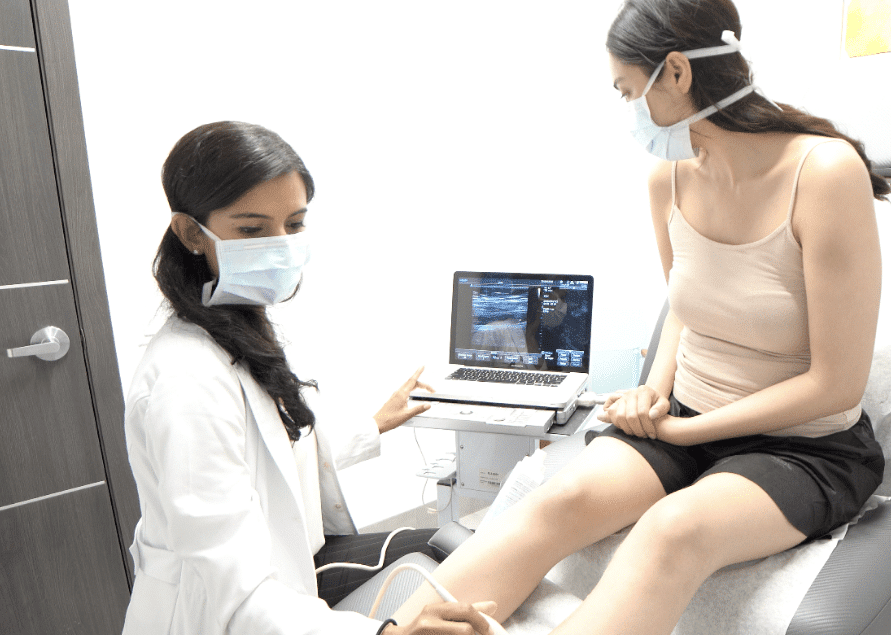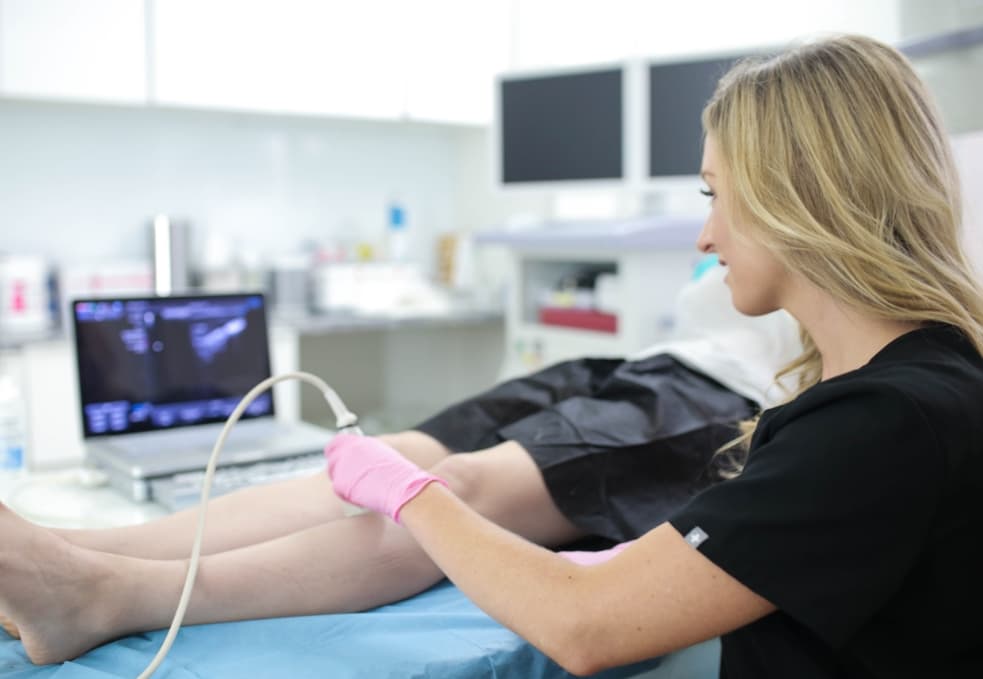If you have been experiencing swelling or pain in your legs, you may have heard of vein mapping as a diagnostic tool for vein problems. But, you may be wondering whether vein mapping is painful. As vein doctors at Maryland Vein Center, we often recommend vein mapping to diagnose vein problems before we create a personalized treatment plan for our patients. In this article, we will discuss what vein mapping is, how it works, and whether it is painful.
What is Vein Mapping?
Vein mapping, also known as duplex ultrasound, is a non-invasive and painless diagnostic tool used to assess blood flow and vein health in the legs. The procedure is performed by a trained ultrasound technician and involves using sound waves to create images of the veins and blood vessels in the legs. The sound waves bounce off the veins and blood vessels in your legs, and the transducer picks up the echoes to create images of the veins and blood vessels.
These images can show the blood flow in your veins and identify any blockages or abnormalities. This information is used to diagnose vein problems and create a personalized treatment plan for you. The images produced by vein mapping can show the location and severity of vein problems, such as varicose veins and deep vein thrombosis (DVT). Varicose veins are twisted, enlarged veins that can be visible on the skin’s surface and can cause discomfort and pain. DVT is a blood clot that forms in a deep vein, typically in the legs.
In addition to diagnosing vein problems, vein mapping can also be used to monitor the progression of treatment. After treatment for vein problems, such as varicose veins, vein doctors can perform follow-up vein mapping to ensure that the treatment was effective. Vein mapping and duplex ultrasound have dramatically increased the efficacy of minimally invasive spider vein and varicose vein treatments, allowing vein doctors to identify and target the problematic veins without damaging the surrounding tissues.

How Does Vein Mapping Work?
Vein mapping is a non-invasive and painless procedure. During the procedure, the vein doctor will apply gel to the skin of your legs and use a handheld device called a transducer to send sound waves through your skin. The sound waves bounce off the veins and blood vessels in your legs, and the transducer picks up the echoes to create images of the veins and blood vessels. The images produced by vein mapping can show the blood flow in your veins and identify any blockages or abnormalities. This information is used to diagnose vein problems and create a personalized treatment plan for you.
Is Vein Mapping Painful?
No, vein mapping is not a painful procedure. In fact, most patients find it comfortable and relaxing. The procedure is non-invasive, meaning that there are no incisions or needles involved. The only sensation you may feel during the procedure is the coolness of the gel applied to your skin. After the procedure, you can resume your normal activities immediately. There are no restrictions or downtime associated with vein mapping.
Why is Vein Mapping Important?
Vein mapping is an essential tool in the diagnosis of vein problems. It allows vein doctors to see the location and severity of vein problems and determine the best course of treatment for their patients. At Maryland Vein Center, we always perform vein mapping before creating a personalized treatment plan for our patients. This ensures we understand the root cause of your vein problems and provide the most effective and minimally invasive treatments for you.
What are the Benefits of Vein Mapping?
Accurate Diagnosis
Vein mapping is a highly accurate diagnostic tool that provides detailed images of the veins and blood vessels in the legs. The images produced by vein mapping can show the location and severity of vein problems, such as varicose veins and deep vein thrombosis (DVT). This allows vein doctors to accurately diagnose vein problems and create personalized treatment plans for their patients. With accurate diagnosis, patients can receive the most effective treatment for their specific condition, avoiding unnecessary procedures or treatments.
Minimally Invasive Treatment
Vein mapping allows vein doctors to identify the root cause of vein problems, which helps them determine the most effective and minimally invasive treatment options for their patients. With the information gained from vein mapping, vein doctors can recommend treatments such as endovenous laser ablation, radiofrequency ablation, and VenaSeal, which require no hospitalization or general anesthesia. Minimally invasive treatments offer several advantages over traditional surgery, such as less pain, less scarring, and a faster recovery time.
Increased Safety
Vein mapping is a safe procedure that does not involve any radiation or contrast dye. This makes it a safer alternative to other imaging techniques, such as CT scans and MRIs. Vein mapping also does not require any incisions or needles, making it a painless and comfortable procedure for most patients. Vein mapping is particularly important for patients who are at risk for developing blood clots or who have a history of vein problems.
Schedule an Appointment at Maryland Vein Center
If you are experiencing swelling or pain in your legs, vein mapping may be the first step in diagnosing and treating your vein problems. At Maryland Vein Center, we offer minimally invasive treatment options, such as sclerotherapy, endovenous laser ablation, radiofrequency ablation, VenaSeal, ClariVein, and ambulatory phlebectomy.
We always perform vein mapping before creating a personalized treatment plan for our patients. This ensures that we understand the root cause of your vein problems and can provide the most effective and minimally invasive treatment options for you. To schedule an appointment with us, please contact our office at 10215 Fernwood Rd, Suite 301, Bethesda, Maryland. We offer free insurance verification even before the first appointment, so you can be confident in the cost of your treatment.





